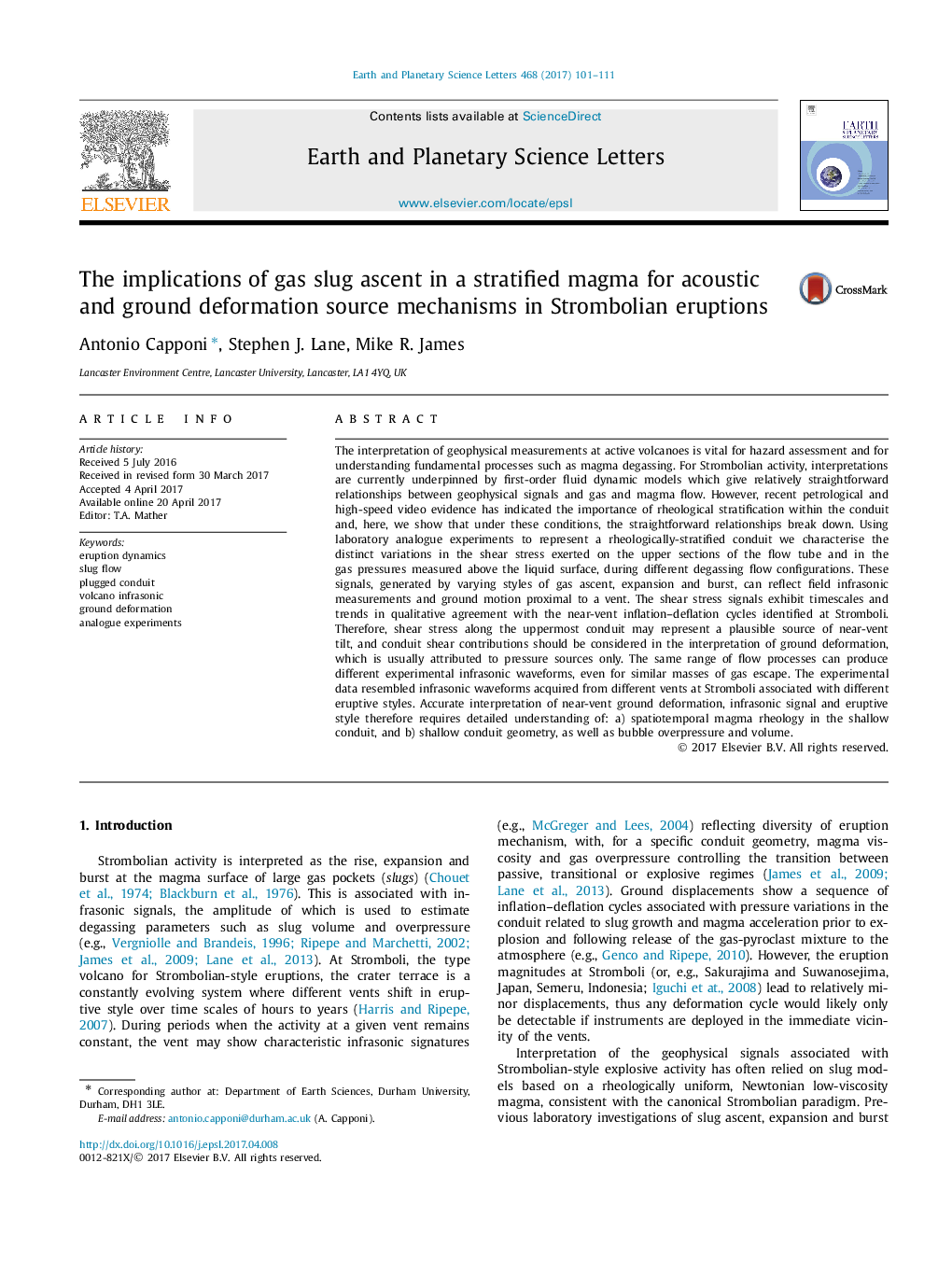| Article ID | Journal | Published Year | Pages | File Type |
|---|---|---|---|---|
| 5779843 | Earth and Planetary Science Letters | 2017 | 11 Pages |
Abstract
The interpretation of geophysical measurements at active volcanoes is vital for hazard assessment and for understanding fundamental processes such as magma degassing. For Strombolian activity, interpretations are currently underpinned by first-order fluid dynamic models which give relatively straightforward relationships between geophysical signals and gas and magma flow. However, recent petrological and high-speed video evidence has indicated the importance of rheological stratification within the conduit and, here, we show that under these conditions, the straightforward relationships break down. Using laboratory analogue experiments to represent a rheologically-stratified conduit we characterise the distinct variations in the shear stress exerted on the upper sections of the flow tube and in the gas pressures measured above the liquid surface, during different degassing flow configurations. These signals, generated by varying styles of gas ascent, expansion and burst, can reflect field infrasonic measurements and ground motion proximal to a vent. The shear stress signals exhibit timescales and trends in qualitative agreement with the near-vent inflation-deflation cycles identified at Stromboli. Therefore, shear stress along the uppermost conduit may represent a plausible source of near-vent tilt, and conduit shear contributions should be considered in the interpretation of ground deformation, which is usually attributed to pressure sources only. The same range of flow processes can produce different experimental infrasonic waveforms, even for similar masses of gas escape. The experimental data resembled infrasonic waveforms acquired from different vents at Stromboli associated with different eruptive styles. Accurate interpretation of near-vent ground deformation, infrasonic signal and eruptive style therefore requires detailed understanding of: a) spatiotemporal magma rheology in the shallow conduit, and b) shallow conduit geometry, as well as bubble overpressure and volume.
Related Topics
Physical Sciences and Engineering
Earth and Planetary Sciences
Earth and Planetary Sciences (General)
Authors
Antonio Capponi, Stephen J. Lane, Mike R. James,
